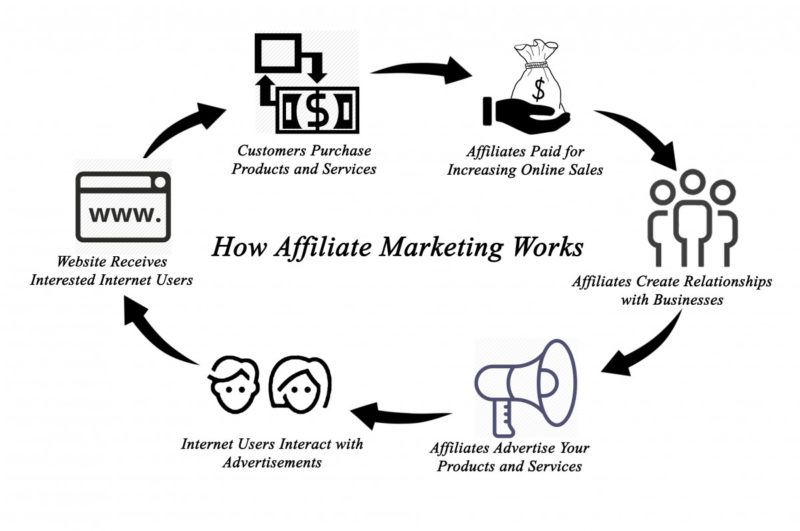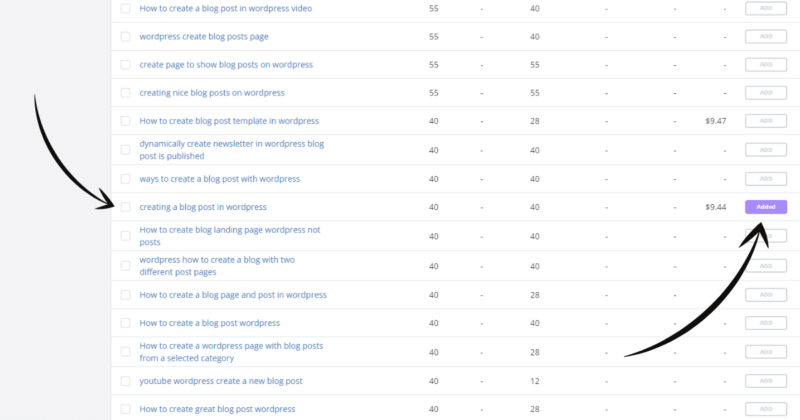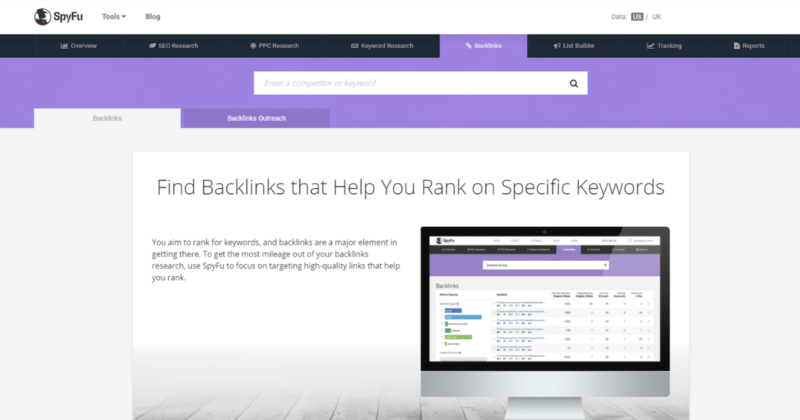Are you interested in earning with affiliate blogging?
If so, you're in luck because there IS room for new blogs! Don't think for one second that there isn't. Successful blogging requires 2 core things:
- Dedication (posting reguarly no matter what)
- Targeting the right keywords
If you post every week and target the right keywords, you WILL gain traffic. Your traffic will continue to increase month after month if you post regularly. Don't waiver in the first few months!
I'm going to teach you everything you need to know. If you don't already have a blog, no problem! I'm going to show you how to get a blog up and running within 20 minutes. You'll be writing affiliate income-generating posts in no time.
With affiliate marketing, you can make a steady income if and only if you follow the right strategy. I will warn you though, it isn't easy, and requires a HUGE amount of dedication. But don't let that stop you! If you put in the work, you could one day quit that 9-5 day job of yours.
So, if you're ready to start earning with affiliate blogging, let's begin.
What Is Affiliate Blogging?
Put simply, it is a blog that capitalizes on its visitor traffic by recommending products and services. Product companies use affiliate marketing to monetize their blogs by offering bloggers and publishers a commission for every sale they refer to their product.
The idea behind affiliate marketing is to choose a product you are interested in, generate a link to promote it and earn commissions for anyone who purchases the product/service you referred.
Using an affiliate program like ShareASale, Amazon Associates, or Commission Junction, you can browse their site and find products to promote. Once you have chosen a product or service, you can acquire an affiliate link to use for promotion purposes.

What are the benefits of affiliate marketing?
Affiliate marketing offers several advantages over other ways to earn money.
You can profit from the beginning. It is unnecessary to wait until you build a massive following before you begin monetizing your new blog. The integration of affiliate links with your content makes monetizing your blog look natural, regardless of how much traffic you get.
A large following is unnecessary. With affiliate marketing, you can start earning money right away without having to build a massive traffic base. The only thing you need to do is ensure that your website attracts traffic interested in your product recommendations.
You can generate passive income. By recommending affiliate products in a blog post, you can generate income again and again. This is known as passive income. Any income that accrues and maintains without much effort is passive.
It is more lucrative. Affiliate blogging has the potential to create even more revenue than traditional placement ads (and it's less intrusive, annoying, and much more informative). I personally don't use any ads on my blog and I can't stand when I land on a page only to be bombarded with ads! Argghh!
How much can you earn?
You get paid for each successful referral you make with affiliate marketing. Referring to a premium product like Rank Math Pro, for example, can net you 30% of the final sale.
Now consider a 2% affiliate conversion rate. For every 100 referrals, you send to the affiliate website; two people actually buy a product. If your affiliate commission is $50 per sale, you could earn $100 from those two referrals regardless of your website's size and reputation.
For Comparison:
AdSense, the world's largest advertising network, has an average CPC (cost per click) of $0.15. Various factors influence the CPC you will earn from AdSense, including your website's size and reputation.
With 100 AdSense clicks, you can earn $25 if your average CPC is $0.25; however, with affiliate marketing, you can potentially make $100 (at a 2% conversion rate).
With that said, you can see how affiliate marketing is undoubtedly one of the best ways to earn more money. Again, while this sounds easy, it requires heart and dedication.
The 4 Steps to Affiliate Marketing
Affiliate marketing experts use these steps to market affiliate products.
Step 1: Start an Affiliate Blog
It goes without saying that to begin affiliate marketing, you need a website or blog. In most cases, affiliate programs will only accept you if you have a blog or a website.
Having a blog establishes authority and proves you aren't a spammer, which is why it is so important. Use this guide to get started: How to Install WordPress Like a Champion.
Using the above method, you'll have an affiliate income blog ready within minutes at a price that can't be beaten for the performance that you get. Once you've got your blog set up and ready, come back here to continue.
Step 2: Choose the Perfect Affiliate Products
When it comes to affiliate marketing, everyone has their own rules and ideals. For instance, affiliate marketer ShoeMoney once said he would not promote a private affiliate product until the owner is met in person to determine whether they are reliable.
The following tips can help you pick the most appropriate products to promote on your blog:
- Promote products and services that you enjoy using. Check your favorite websites for affiliate programs. Often they are listed in the footer. You can also try searching Google with “nameofwebsite” + affiliate program.
- Provide your readers with products that offer money-back guarantees; that way, if they mistakenly buy a product that they don't want, they can get their money back.
- Sign up for an affiliate network like ShareASale and find reputable products that suit your niche.
Once you are familiar with the products you will be promoting; the next step is to register as an affiliate for those products and grab your affiliate link.
Step 3: Use the Right Keywords
To generate affiliate sales, you must focus on getting the right audience interested in the service or product you recommend. The question is, how can you determine whether your blog is driving the right traffic and what the audience's intentions are? If the search engine traffic you drive to your blog has an investigative intent, you're more likely to make affiliate sales.
User intents are broken down into four categories:
Navigational intent: Users search for a specific website. The only thing they want is to navigate to the website they wish to visit.
Informational intent: Internet users are searching for information relevant to their questions.
Investigational intent: Users seek information that influences their decisions.
Transactional intent: The user is ready to buy or download the product.
Affiliate marketers should optimize their blogs for investigational terms. Investigational keywords are used by your potential audience when they haven't decided whether to purchase your product. Before making a final purchase decision, they compare products and search for reviews and recommendations.
Investigative keywords will include the following words:
- Best
- Review
- Compare
- Alternative
In most cases, if your site appears for these keywords, you have likely attracted the right audience. Google Analytics provides a query report showing your users' actual search terms to find your site at Acquisition > Search Console > Queries.
How to Find Keywords?
My absolute favorite tool for keyword research is SpyFu. Enter a keyword here to begin. Then use the tools and sortable column headers to find keywords with low keyword difficulty and high SEO clicks.

Try to identify the most relevant and valuable keywords for your site, and find out if you can create content around them.
Bonus Idea!
Use SpyFu to generate niche ideas for an affiliate income blog! Find common themes among keywords users are searching for, and build a micro-niche around it. Gather around 50-100 keywords, and use them for your first posts. You'll be off to a great start with this method.
Step 4: Promote Affiliate Links Within Your Content
It's essential to write a detailed piece of long-form content (such as a tutorial) and include your affiliate with clearly visible content if you want to earn long-term affiliate income. This strategy has the advantage of both short-term promotion and long-term exposure through Google rankings of your blog.
Additionally, the product does not need to be shoved down people's throats to work. It is just a gentle recommendation of a particular product for what will work best during that part of the process.
If you plan to add affiliate links to your WordPress website, I strongly recommend installing Pretty Links, one of the top affiliate marketing plugins.
Why?
Typically, affiliate links are long, ugly URLs, for example:
http://example.com/product/?product_id=123&affiliates_id
By cloaking these affiliate links and making them shorter and neater, your links will look like this:
http://www.yoursite.com/refer/productname
Your link is now branded and much more trustworthy, leading to higher conversion rates. Here are a couple of my other favorite reasons for using Pretty Links:
Auto Linking: Attach your affiliate links automatically using keywords. Specify your affiliate URL and keywords, and Pretty Links will automatically append the URL to your keywords throughout your entire website!
Bulk Updating: Manage your affiliate links from a single dashboard location. If your affiliates ever change their affiliate URL, you won't have to dig through your blog's archives to update each of your affiliate links, saving you countless hours of work. By simply changing your affiliate URL, you can easily update every affiliate link all at once!
Other reasons for using Pretty Links include:
- Google Analytics integration
- Conversion reports
- Advanced redirects
- Split testing redirects
- Nofollow links
- Robot filtering
- Link categories and tags
- Custom slugs
Strategies For Even MORE Revenue
Now that you have an idea of how affiliate marketing works let's talk about how to make as much money as possible by recommending products on your blog.
1. Monitor Clicks on Affiliate Links
You can track affiliate clicks on almost every affiliate program, but Pretty Links also provides easy link tracking right in your WordPress dashboard. You'll be able to see which links aren't getting many clicks (compared to others) so that you can focus more of your attention on them. You'll also be able to tell if your on-page efforts to increase clicks are working!
2. Monitor Keywords
I used to recommend MonsterInsights, but have decided it isn't worth it. Don't waste your money! Just enroll your website in Google Search Console. When your blog begins to rank for certain keywords, add them to SpyFu's keyword tracking for more insights.
With SpyFu you can easily track your SEO efforts, and can even compare your cached SERPs for each keyword against your competitors. This is really one of my favorite features as I use it quite frequently.
3. Increase Revenue With Exit-intent Popups
Once a customer leaves your website, you've lost a potential opportunity. Taking advantage of those last seconds allows you to capitalize on exit intent strategies.
Approximately 70% of your abandoned site visitors will never return. When your visitors are about to leave, you can show them an affiliate offer through an exit-intent popup.
With exit-intent popups, users are prompted with targeted campaigns, such as affiliate promotions, and work by only activating when it detects that a user might be trying to leave your website.
Brave, the best popup solution available today, lets you easily create an exit-intent popup. It's also very lightweight and doesn't have any errors on WP Hive.
Exit-intent popups are your last chance to capitalize on website visitors before they leave, but they aren't for everyone. I prefer to use them very seldomly.
4. Advertise Your Article on Facebook to Drive traffic
By leveraging Facebook Ads, you can drive web traffic to an article that has a high-quality tutorial.
Typically, if your affiliate product or service has a high payout price (say $50 or more), you can make quite a bit even if you spend a lot on advertising. You will do quite well as long as you have high converting pages and plenty of traffic in the niche.
Ensure that you do extensive tracking and testing to determine what's succeeding and why. Do not make too many assumptions here!
5. Use Your Email List to Promote Affiliate Products
If you haven't captured any subscribers to your blog yet, I'm here to tell you that you should start. A powerful way to generate extra affiliate income with your blog is by promoting an affiliate product to a mailing list.
Why it is so powerful?
With services like SendinBlue, you can create a line of successive automatic emails to your subscribers. Mailchimp reports that the average open rate for emails is 20%, and the average click-through rate for email campaigns is 2-4%.
You're sitting on a considerable amount of money, depending on your audience size. This is especially true considering how little work is required. And the ROI (return on investment) can be huge!
It is crucial not to say things like “Buy X now” because it is incredibly pushy. Instead, you should provide valuable content, using affiliate products only if they could help your subscribers.
Or simply send them back to your affiliate website.
6. Use Graphics to Highlight Your In-post Messages
Ensure that people see your affiliate link by highlighting your affiliate mentions. There are so many ways to go about this, so you will need to evaluate the effectiveness of your particular blog post to determine what works best for you.
For example, I use these custom CSS blocks and Gutenberg buttons for content highlighting.
7. Your Articles Should Have Links Pointing to Them
Everyone will tell you how to build backlinks like it's the easiest thing in the world. The truth is that building backlinks is incredibly hard. I don't recommend spending a lot of time on this in the beginning. Focus on writing amazing and original content, and the backlinks will naturally follow. I wouldn't worry about backlink outreach for at least 6 months.
How to build backlinks
Use SpyFu's Backlink Builder!

Using this tool, you can find backlinks from your competitors that are helping them rank on Google. Then use the outreach tool to contact site owners about putting your links on their websites too. You can also negotiate with site owners about guest posting, which is creating articles for their websites that link back to yours!
Writing a guest post on a high-authority blog that cites your original post when appropriate is advisable. Some blog owners will allow this as long as it isn't a lousy sales pitch. Try to provide value to THEIR blog, and subtly link to your website with an anchor keyword.
Remember, the idea is to get backlinks, not generate traffic. The backlinks will help your organic search rankings, increasing organic traffic.
8. Get Familiar With Your Product or Service
One of the reasons why some affiliates are incredibly successful is because they use the product or service directly or incidentally as part of their business.
Creating content that demonstrates your skills with the product or service is best to boost affiliate product sales. Demonstrate its power and how well you can utilize it to accomplish your goals.
Conclusion
In this guide, you've learned how to get started with affiliate blogging and how to optimize it for maximum profit. Hopefully, I helped you decide if this endeavor was right for you.
Did I miss anything? Let me know in the comments below. I would love to know what you think! Thank you.